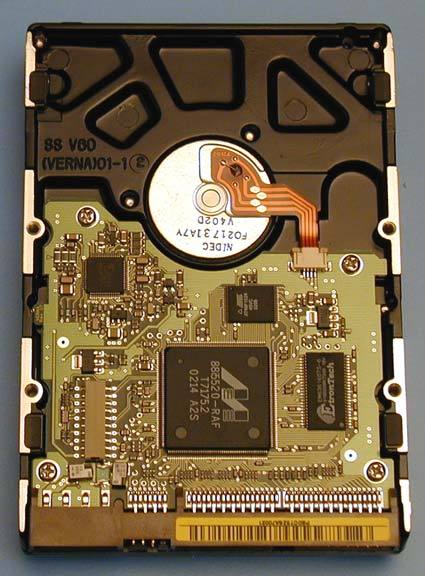Surprise From An Outsider: Samsung SV1204H With 120 GB
At The Technical Peak Of The Times: 60 GB Per Platter
The most important step in getting larger hard drives and increasing performance is to raise the data density (in bit per surface unit). The more information that fits on an existing surface, the larger the capacity of the disk drive. Analogous to this, the data transfer rate can also be increased using this method: the closer the sectors are to one another, the more sectors pass through the read and write heads per rotation.
Another advantage to having higher data density is that the fewest possible platters can be used per disk drive. This is an advantage because production costs are reduced (due to fewer materials and heads needed), as is the friction within the hard drive.
On the other hand, a high data density can also be used to boost the total capacity. The more data that fits on a platter, the larger the capacity of the hard disk. As an example, IBM used this method to the extreme with the 15-75 GB models of its DeskStar 75 GXP series - these had from one to five platters at 15 GB each.
Seagate and Western Digital have also announced products based on 60 GB platters (Barracuda ATA V and 2000BB, respectively), but these run at 7200 rpm and are geared toward the high-end sector. Therefore, they are considerably more expensive than the Samsung hard drive.
Get Tom's Hardware's best news and in-depth reviews, straight to your inbox.
Current page: At The Technical Peak Of The Times: 60 GB Per Platter
Prev Page An Outsider Surprises: Samsung SV1204H Next Page Interface: UltraATA/100
Patrick Schmid was the editor-in-chief for Tom's Hardware from 2005 to 2006. He wrote numerous articles on a wide range of hardware topics, including storage, CPUs, and system builds.
